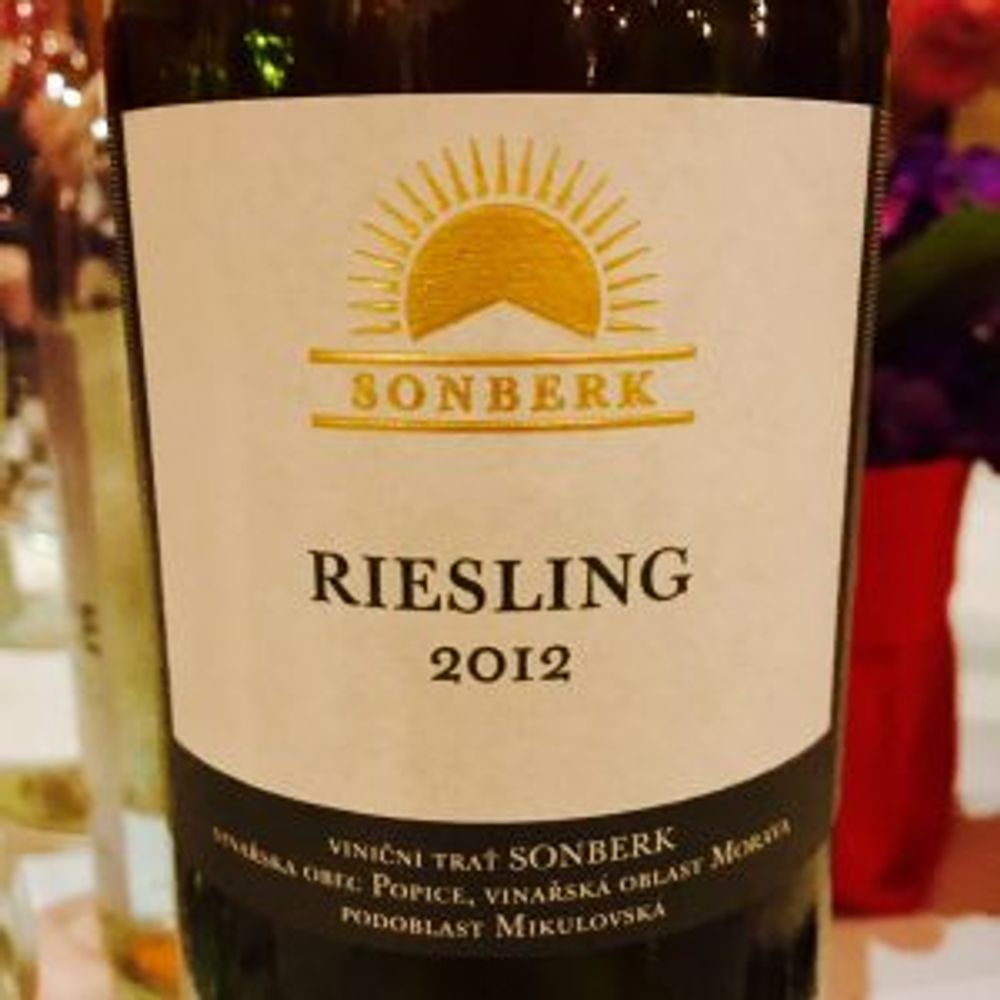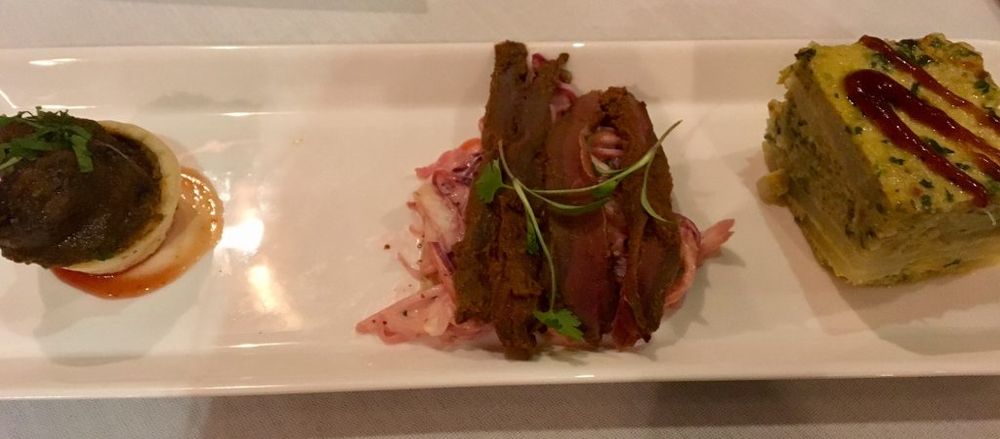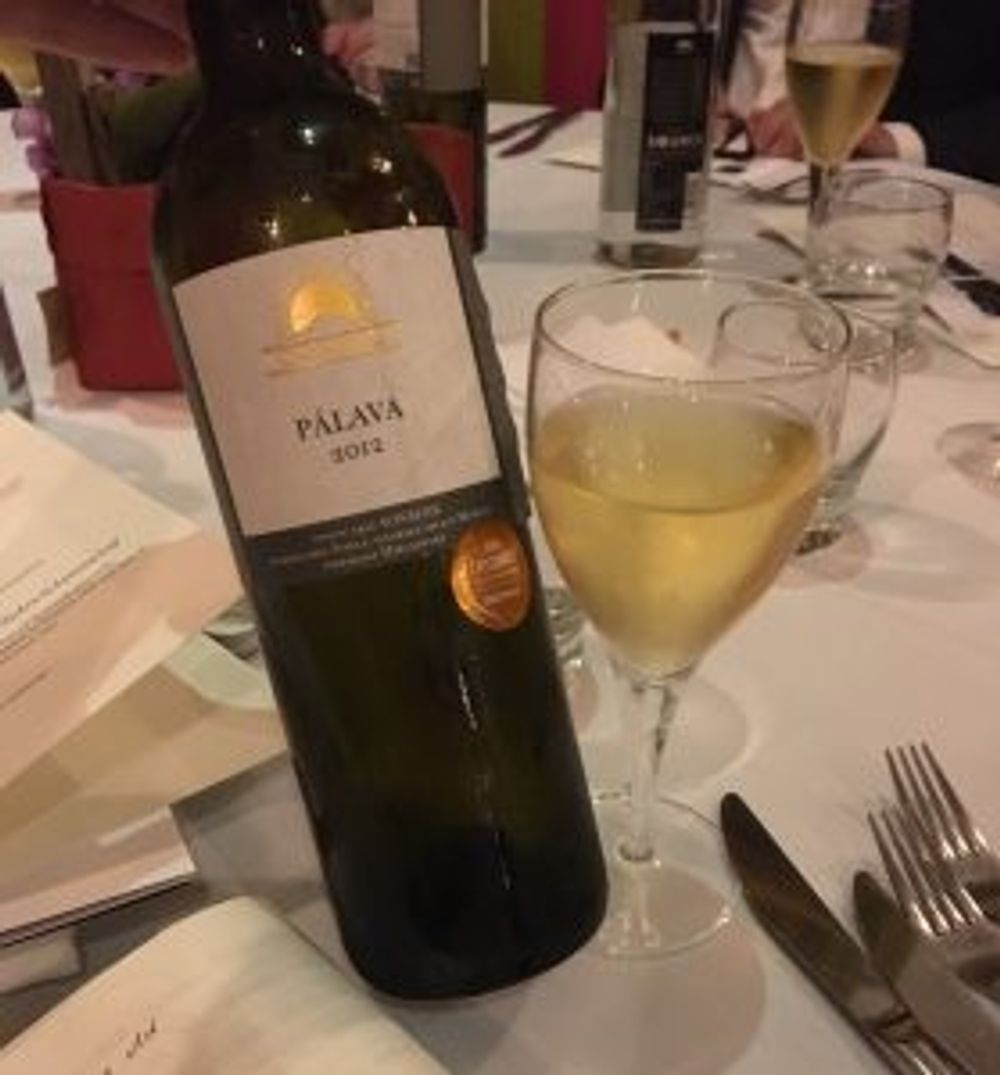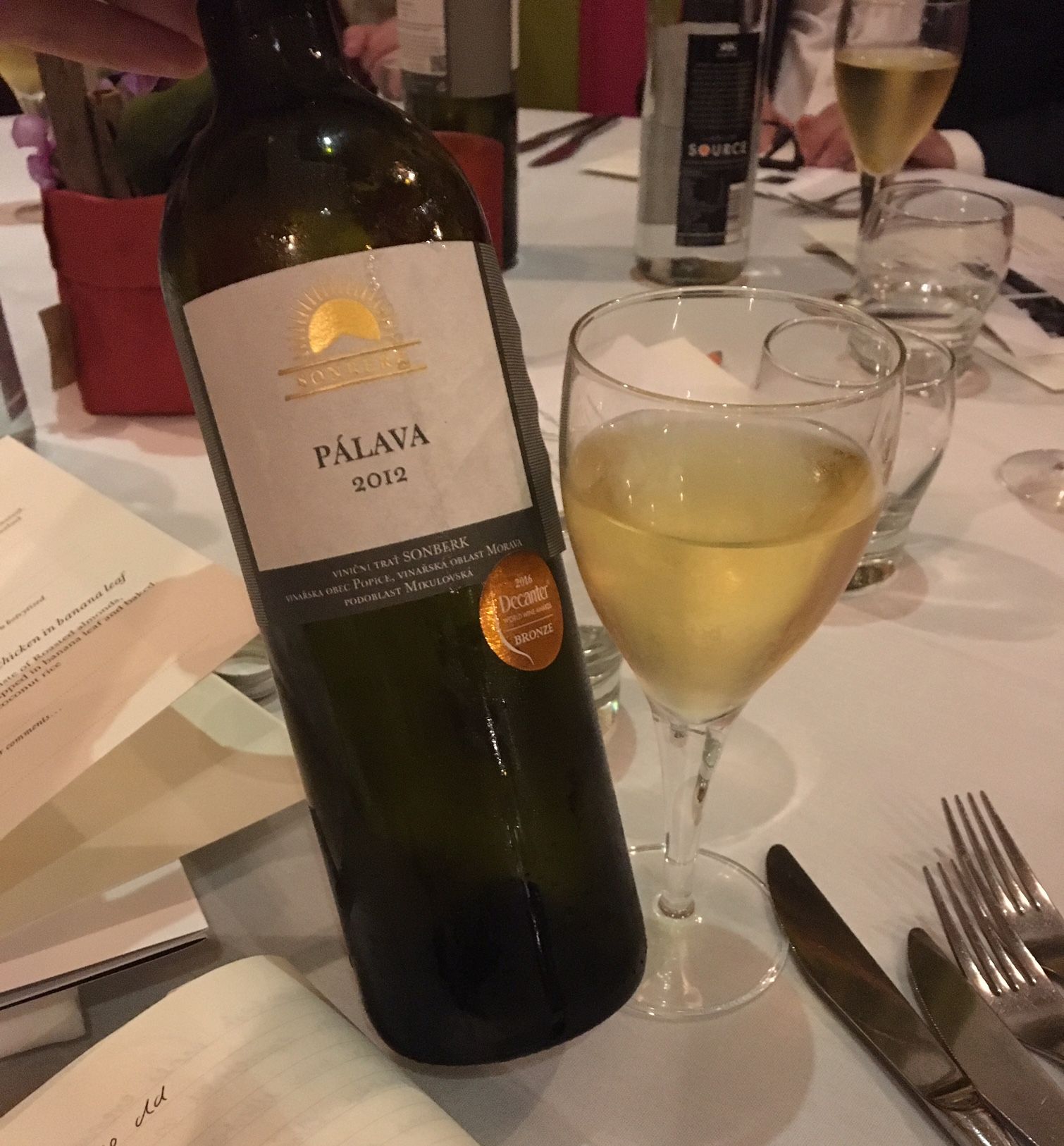Chilli snails, slow cooked dates, peppercorn ice cream – just some of the foods that were paired with Sonberk’s Pálava wines.
I recently attended a Wine and Spice event introducing the wines of Sonberk to the UK wine trade, at which the wines were paired with creative Indian dishes cooked by Cyrus Todiwala OBE DL of Café Spice Namaste.
The food was highly imaginative, and certainly showed the versatility of the Czech white wines for the on-trade.
I was introduced to Pálava for the first time, a white varietal created in 1953 in Moravia, and registered in 1977. It is a crossing of Tramín červený (Gewürztraminer) and Müller-Thurgau. The cool, sunny climate in the Czech Republic suits this late ripening varietal well.
Pálava produces unique and attractive wines, with lovely, spicy, fuller-bodied aromatic qualities coming mainly from the Gewürz and a freshness and stone fruit palate coming from the Müller-Thurgau. Pálava also produces interesting sweet wines, and a lovely unique straw wine.
One thing that the tasting really hit home was the enormous potential for sweeter wines paired with Asian dishes.
Let’s take a look at those wines in full:
Sonberk Riesling, 2012

This wine has lovely steely, mineral notes on the nose, with slightly honeyed aromas and fresh rubber zinging through. I can see this developing lovely, richer, burnt rubber elements with time. On the palate, apricot and honey aromas appear, with a long, wet stone finish.
Paired with omelette of prawns and crab meat, breast of pigeon marinated with whole spices and chilli smoked over cinnamon and cloves, and snails in garlic chilli and crushed coriander on a base of Goan Xacutti curry.

Sonberk Pálava, 2012

I really like the aromatic qualities of this wine, and its lovely soft, round palate means it was a lovely pairing for the duck’s richness.
This is a very good choice of white wine to have with slightly richer dishes. Nutmeg and fresh rose petals on the nose, with white peach and apples on the palate. Very moreish, and with a lovely mineral finish. Residual sugar of 6.8g/l.
Paired with leg of duck marinated with ginger, chilli and soy, slow roasted, shredded and served warm on a bed of glass noodle salad.
Todiwala stated, “I had to play a lot with this wine for its food pairing.”

Sonberk Pálava 2013, sweet
Richer nose of some vanilla, rose, tangerine and tinned peaches with a big body and lovely acacia notes. The complex aromatics with some cinnamon and nutmeg hints and lifted sweetness made it a good companion to the sweet almonds and garlic.
Paired with chicken breast marinated in paste of roasted almonds, chilli, ginger, garlic, and spices, wrapped in banana leaf and baked. Served with coconut rice.
Sonberk Pálava 2013, straw wine

Both this and its accompaniment were wonderful.
This is the first Pálava straw wine created by Drápal, due to the ideal conditions in the 2013 vintage. Grapes are dried for three months. Low alcohol of only 10%. On the nose, honey and orange blossom are accompanied by toffee notes, with orange peel and candied citrus on the palate. A particularly fresh vibrancy and zingy acidity were present.
The dessert was wonderful and the black peppercorn ice cream lifted the sweetness of the dates.
Paired with slow pan-grilled dates cooked until soft, crushed and blended with toasted sesame seeds, filled in savoury pancake, pan-fried and served with black peppercorn ice-cream.

So who are Sonberk exactly?
The Sonberk vineyard sits at the foot of the Slunečná hill in the region of Moravia.
Wine has been grown and documented in the region since the thirteenth century, with the current Sonberk winery being founded in 2003.
Some 40 hectares are now cultivated sustainably of Riesling (12ha), Pálava (6ha), Traminer and Sauvignon, with a production of approximately 150,000 bottles per year. A quarter of vineyards and apricot orchards are currently farmed organically. South facing vineyards lie at approximately 210-260m above sea level.
Grapes are hand-harvested and transported for circa 10 mins to the winery in 15kg boxes. All winemaking takes place via gravity. Sonberk’s own yeasts are used, saccharomyces cerevisiae subspecies Sonberk. These were selected for the first time in 2008, with the aim of ultimately expressing the terroir as much as possible.
Nothing is added to the fermenting juice, and fining takes place with bentonite. Whites are softly filtered, reds unfiltered. Sulphite use is kept to a minimum from approximately 55g/L – 95g/L, depending on vintage. Straw wine needs a little more although only circa 120g/L.
Oldrich Drapa Jr. is head winemaker at Sonberk, creating the first straw wine when he was just 17 years old.
I look forward to seeing more Czech wine in the UK wine trade, and hopefully more of these imaginative food pairings. In particular, Pálava provides a very interesting pairing for Asian cuisine.
Sonberk wines are now available to the UK wine trade through Ellis of Richmond.
































